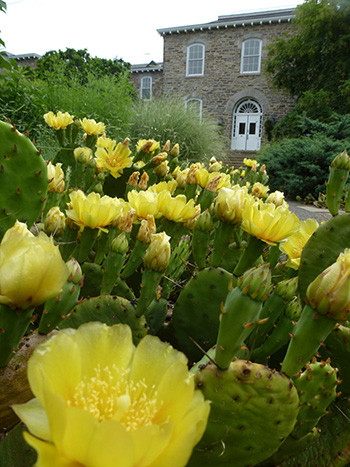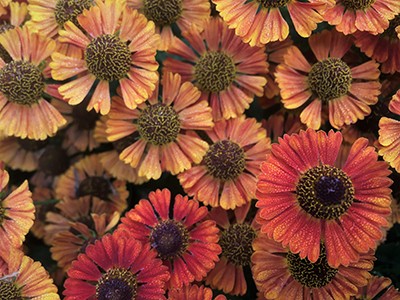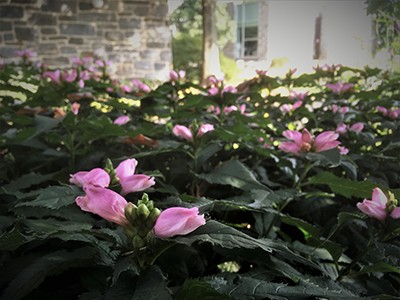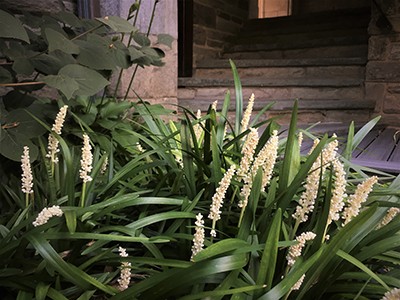
Plants of the Week: August 28
Helenium autumnale ‘Salsa’
Being able to fill in gaps in the garden with a reliable, pest free, perennial is a wonderful feeling, especially when that perennial brings such a burst of color. The dense, compact and tidy habit of Helenium autumnale ‘Salsa’ will do just that for your garden from late summer through fall. H. autumnale can be found in the Pollinator Garden at the Scott Arboretum covered with bright red blooms that will age to shades of orange and yellow as the seasons progress.
Also known as Helen’s flower, or sneezeweed, this pollinator magnet is an excellent option for planters, borders, or simply massing throughout the garden. H. autumnale grows to be 18-20 inches tall and can spread 20-24 inches wide in a well-drained, moist , sunny location. Photo Credit: R. Armstrong
Chelone lyonii ‘Hot Lips’
I’ve been watching this plant get larger and larger; noticing its dark serrated foliage in different gardens throughout the Scott Arboretum. Last week when it bloomed, I was pleased to find showy, pink, snapdragon-like flowers perched at the top of the stems. Chelone lyonii ‘Hot Lips’ is a herbaceous perennial from the family Plantaginaceae.
Also known as pink turtlehead, due to its flower resembling an open-mouthed turtle, it naturalizes in full sun to part shade in rich, moist, humusy, soil. This is a deer tolerant native which escaped gardens in parts of New England and has made its way into the forests. C. lyonii spreads slowly by rhizomes or by self seeding, however, it is not considered invasive.
There are no serious insect problems that come with this perennial, but some may be susceptible to mildew if soils are kept on the dry side with poor air circulation. If grown in too much shade, staking or pinching may be required. Examples of Chelone lyonii can be found in the Pollinator Garden and in the Scott Entrance Garden. Photo Credit: R. Armstrong
Liriope muscari ‘Monroe’s White’
Liriope has been in almost every garden where I have worked. I keep waiting for the day that I get sick of seeing it, but that day has not yet come. It’s a fantastic ground cover that keeps gardens looking full and orderly. This fast growing, easy care, perennial needs only occasional maintenance once established. Lilyturf benefits from removal of old foliage each spring and division every 2 to 3 years.
L. muscari is used in Asian inspired gardens along rock paths or planted in masses under trees and shrubs. The leaves of liriope were used as bookmarks in ancient China where paper was an expensive commodity. L. muscari is fantastic for cut flowers arrangements, is pet friendly, bird friendly, and has year round interest.
This particular cultivar, with its white flower spikes, can be found in the Theresa Lang Garden of Fragrance. ‘Monroe’s White’ prefers more shade, well-drained soil, and grows slower than other lilyturf. This makes it an excellent option for specimen projects or areas where you do not want anything invasive. Photo Credit: R. Armstrong








Julie Robbins
Posted at 11:23h, 13 MayThis is a very pretty variety. Excellent photo. – Julie Robbins